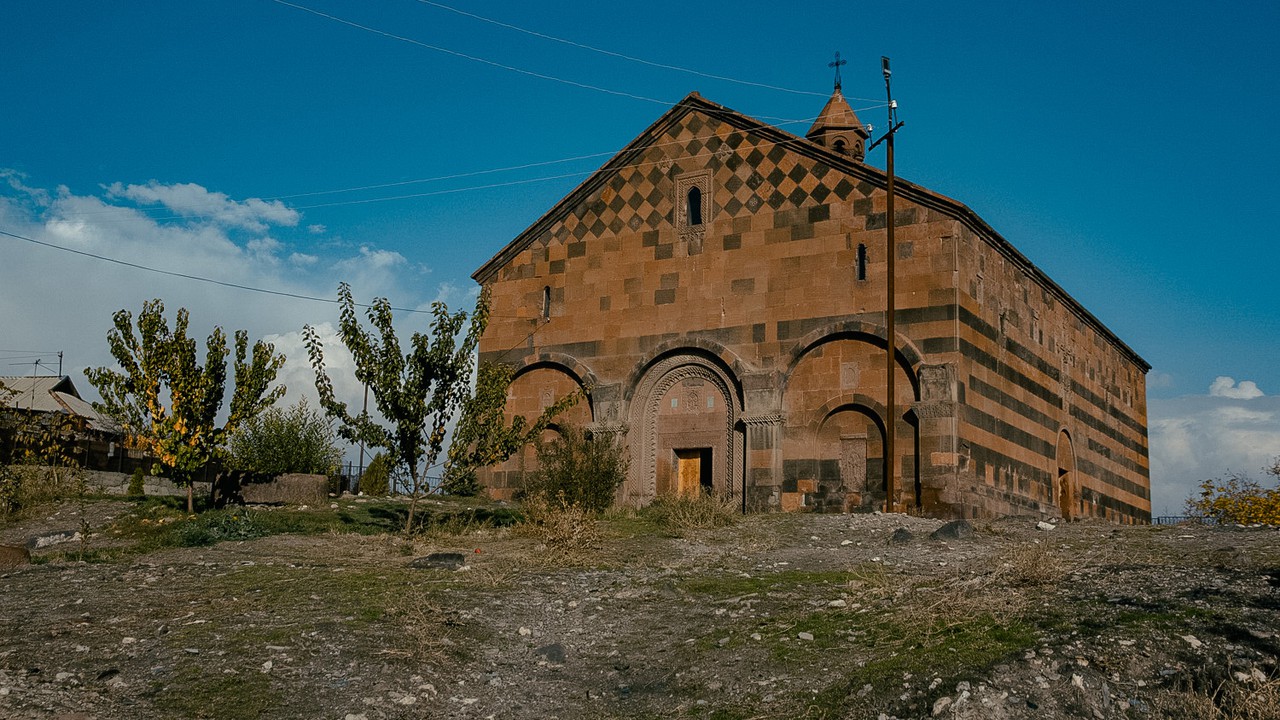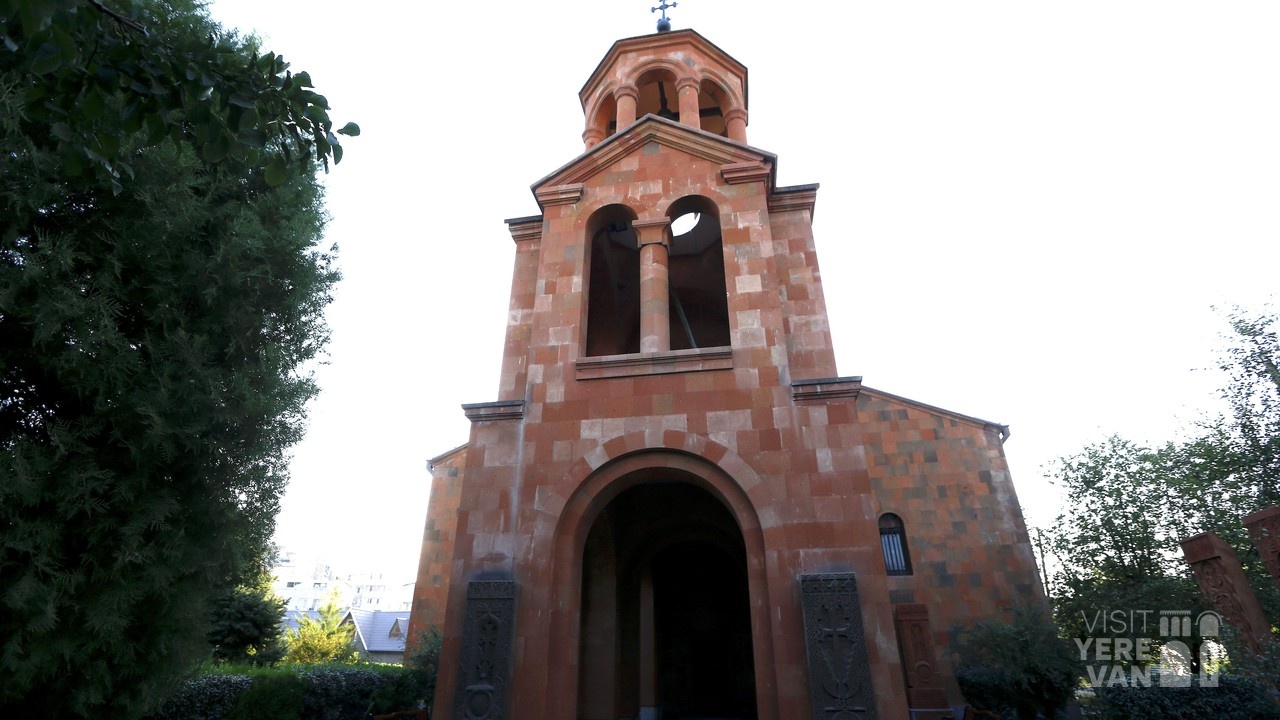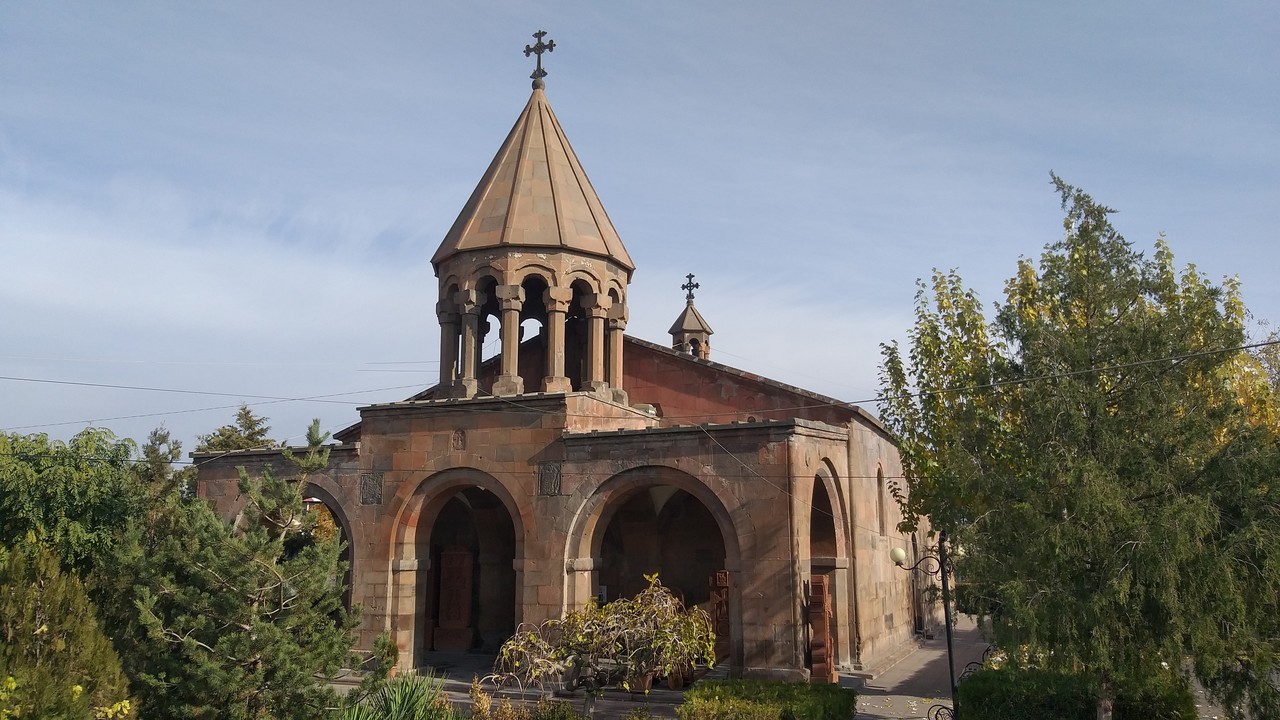PLACES OF WORSHIP

HOLY MOTHER ОF GOD CHURCH IN KANAKER
The Holy Mother of God Church in Kanaker is one of the best-preserved examples of the three-nave basilica churches common in late medieval Armenia. 1695
State index: 1․12․5
The Holy Mother of God Church is located
in the 3rd alley of Kanaker 6th street, not far from the Church of Saint Jacob.
According to the inscription on the stone near the western entrance, it was
built in 1695 with the funds of merchants, led by Khoja Aghajan. It has a
three-nave basilica plan with internal dimensions of 12.8 x 21 meters, covered
with a vault with two cross columns. On both sides of the semicircular altar
are rectangular, vaulted vestries. The nave and arches are arrow-shaped. The
facade of the stage is decorated with carved tiles.
The main entrance to the church is
located in the center of the three arches of the western facade, and arched
niches with carved khachkars are located at the edges. Walls were added to the
western facade to create a three-arched open hall, but the construction
remained unfinished. The western entrance has the same decoration as the St.
Jacob Church: a rectangular opening, which is bordered by woven geometric
patterns, with sculpted zones, the first of which is made of stone. The
southern entrance also opens into an arched niche. Lighting is provided by
windows on all facades. The altar window has a rich cross-shaped decoration. On
the gable roof of the church, in the center of the prayer hall, rises a small
rotunda of the bell tower. The outer facades are decorated with a skillful
combination of black and red polished tuff. The walls are faced with stones
from the surrounding cemetery, from the 10th-17th centuries. Cross-stones
(1463, 1465, Miragi - 1504, Kirakos and Hantut - 1505, Hakob, Gokhar and Asatur
- 17th century) and tombstones, some of which have inscriptions (the tombstone
of Mkhitar of Tokhatsi, 1691, etc.). On the eastern facade, under the roof, is
the cross-stone of Khoja Aghajan, the head of the church's construction (17th
century).
Inside, the walls and cross-stones of the
church are whitewashed. Traces of buildings and a fence remain nearby. In
1959-1963, the southern wall and roof of the church were renovated. In 1963,
the roof was replaced.
Sarcophagi have been preserved in the
cemetery near the Surb Astvatsatsin Church. According to locals, Kanakertsi
Aghasin, the hero of Khachatur Abovyan's novel "Wounds of Armenia",
is also buried in the cemetery. The cemetery also continued east of the church
to Tsarav Aghbyur Street, where a small section divided by buildings has been
preserved, containing cross-stones (15th-17th centuries) and tombstones
(17th-19th centuries). Here, inside the chapel, stand 17th-century
cross-stones, one of which is erected in memory of Satpasha and Bekisultan.




